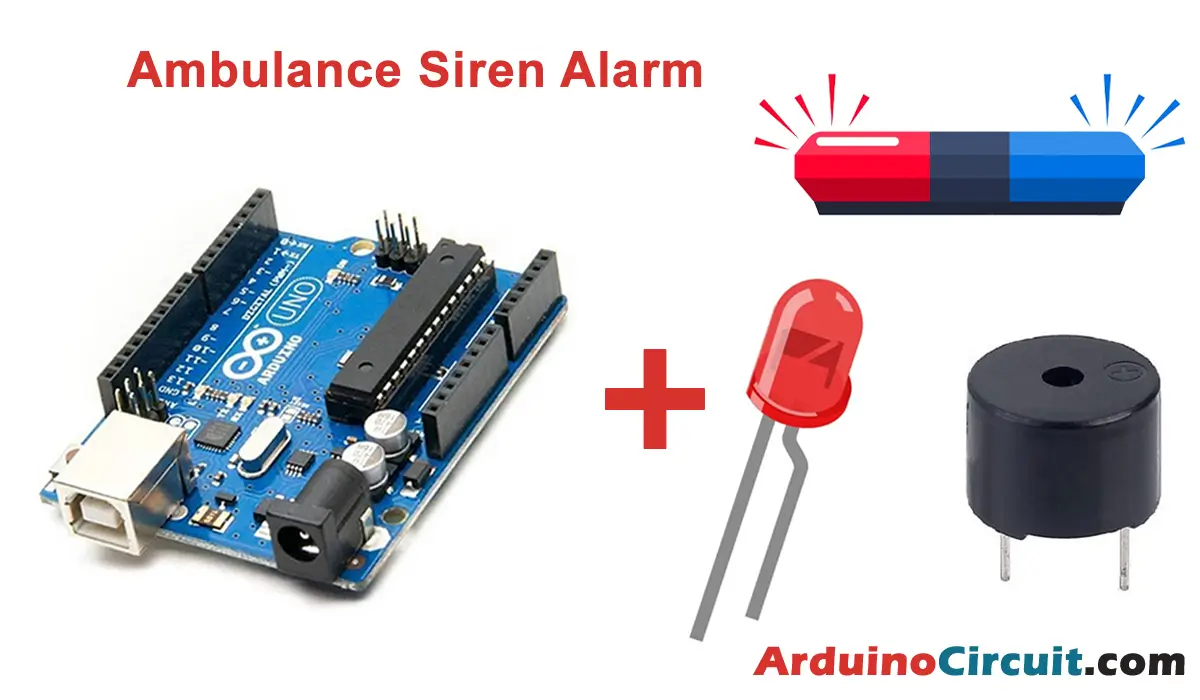Introduction
In this tutorial, we will explore how to Stepper Motor Control with Joystick and Arduino and a joystick module. Stepper motors are widely used in various applications that require precise control over rotational movement. By incorporating a joystick module, we can intuitively control the speed and direction of the stepper motor, opening up possibilities for interactive projects and automation systems.
Hardware Required
| Components | # | Buy From Amazon |
|---|---|---|
| Arduino UNO | 1 | Buy Now |
| Stepper Motor (28BYJ-48) 5V | 1 | Buy Now |
| Joystick Module | 1 | Buy Now |
| 2.1mm Jack Screw Terminal | 1 | Buy Now |
| 9v DC Adapter (Optional) | 1 | Buy Now |
| Jumper Wires | Few | Buy Now |
| Breadboard | 1 | Buy Now |
Circuit Construction
To construct the Arduino joystick-controlled stepper motor circuit, you will need an Arduino Uno, a stepper motor (such as the 28BYJ-48 5V stepper motor), a joystick module, jumper wires, a breadboard for prototyping, and a 5V power supply. Connect the components according to the schematic diagram, ensuring proper wiring between the Arduino, stepper motor driver, and joystick module. Pay attention to the power supply connections and ensure that the components are securely connected.
Circuit Diagram

Working Explanations
The working principle of this circuit involves reading the analog outputs from the joystick module, which indicates the position of the joystick along the X and Y axes. These analog values are mapped to a specific range and used to control the speed and direction of the stepper motor. The Arduino Uno reads the analog input values and sends corresponding signals to the stepper motor driver, which in turn controls the stepper motor’s step and direction pins. By manipulating the joystick, we can change the analog values and dynamically adjust the speed and direction of the stepper motor rotation.
Installing Arduino IDE Software
First, you will require to Download the updated version of Arduino IDE Software and Install it on your PC or laptop. if you Learn How to install the Arduino step-by-step guide then click on how to install Arduino Button given Blow
Code
//For more Projects: www.arduinocircuit.com
#define step_pin 3 // Pin 3 connected to Steps pin on EasyDriver
#define dir_pin 2 // Pin 2 connected to Direction pin
#define MS1 5 // Pin 5 connected to MS1 pin
#define MS2 4 // Pin 4 connected to MS2 pin
#define SLEEP 7 // Pin 7 connected to SLEEP pin
#define X_pin A0 // Pin A0 connected to joystick x axis
int direction; // Variable to set Rotation (CW-CCW) of the motor
int steps = 1025; // Assumes the belt clip is in the Middle
void setup() {
pinMode(MS1, OUTPUT);
pinMode(MS2, OUTPUT);
pinMode(dir_pin, OUTPUT);
pinMode(step_pin, OUTPUT);
pinMode(SLEEP, OUTPUT);
digitalWrite(SLEEP, HIGH); // Wake up EasyDriver
delay(5); // Wait for EasyDriver wake up
/* Configure type of Steps on EasyDriver:
// MS1 MS2
//
// LOW LOW = Full Step //
// HIGH LOW = Half Step //
// LOW HIGH = A quarter of Step //
// HIGH HIGH = An eighth of Step //
*/
digitalWrite(MS1, LOW); // Configures to Full Steps
digitalWrite(MS2, LOW); // Configures to Full Steps
}
void loop() {
while (analogRead(X_pin) >= 0 && analogRead(X_pin) <= 100) {
if (steps > 0) {
digitalWrite(dir_pin, HIGH); // (HIGH = anti-clockwise / LOW = clockwise)
digitalWrite(step_pin, HIGH);
delay(1);
digitalWrite(step_pin, LOW);
delay(1);
steps--;
}
}
while (analogRead(X_pin) > 100 && analogRead(X_pin) <= 400) {
if (steps < 512) {
digitalWrite(dir_pin, LOW); // (HIGH = anti-clockwise / LOW = clockwise)
digitalWrite(step_pin, HIGH);
delay(1);
digitalWrite(step_pin, LOW);
delay(1);
steps++;
}
if (steps > 512) {
digitalWrite(dir_pin, HIGH);
digitalWrite(step_pin, HIGH);
delay(1);
digitalWrite(step_pin, LOW);
delay(1);
steps--;
}
}
while (analogRead(X_pin) > 401 && analogRead(X_pin) <= 600) {
if (steps < 1025) {
digitalWrite(dir_pin, LOW);
digitalWrite(step_pin, HIGH);
delay(1);
digitalWrite(step_pin, LOW);
delay(1);
steps++;
}
if (steps > 1025) {
digitalWrite(dir_pin, HIGH);
digitalWrite(step_pin, HIGH);
delay(1);
digitalWrite(step_pin, LOW);
delay(1);
steps--;
}
}
while (analogRead(X_pin) > 601 && analogRead(X_pin) <= 900) {
if (steps < 1535) {
digitalWrite(dir_pin, LOW);
digitalWrite(step_pin, HIGH);
delay(1);
digitalWrite(step_pin, LOW);
delay(1);
steps++;
}
if (steps > 1535) {
digitalWrite(dir_pin, HIGH);
digitalWrite(step_pin, HIGH);
delay(1);
digitalWrite(step_pin, LOW);
delay(1);
steps--;
}
}
while (analogRead(X_pin) > 900 && analogRead(X_pin) <= 1024) {
if (steps < 2050) {
digitalWrite(dir_pin, LOW);
digitalWrite(step_pin, HIGH);
delay(1);
digitalWrite(step_pin, LOW);
delay(1);
steps++;
}
}
}Applications
- Robotics: Use the Arduino joystick-controlled stepper motor circuit to control the movement of robot arms, robotic vehicles, or other robotic systems requiring precise motor control.
- Camera Slider: Build a camera slider with a stepper motor and use the joystick module to control the smooth movement of the camera along the slider, allowing for professional-looking video shots or time-lapse photography.
- 3D Printing: Incorporate the circuit into a 3D printer setup to control the movement of the print head or other motorized components, providing precise control over the printing process.
- CNC Machines: Utilize the circuit to control the movement of stepper motors in computer numerical control (CNC) machines, enabling precise and programmable control over the machine’s axes.
- Automated Systems: Integrate the circuit into automated systems, such as smart home projects, where the joystick can be used to control motorized blinds, curtains, or other moving components.
Conclusion
By combining an Arduino Uno, a stepper motor, and a joystick module, we can create an Arduino joystick controlled stepper motor circuit. This circuit provides a versatile and interactive way to control the speed and direction of a stepper motor. With applications ranging from robotics to camera sliders and automated systems, this circuit opens up a world of possibilities for creative projects and automation. Experiment with different joystick movements and incorporate this circuit into your projects to add intuitive motor control functionality.





